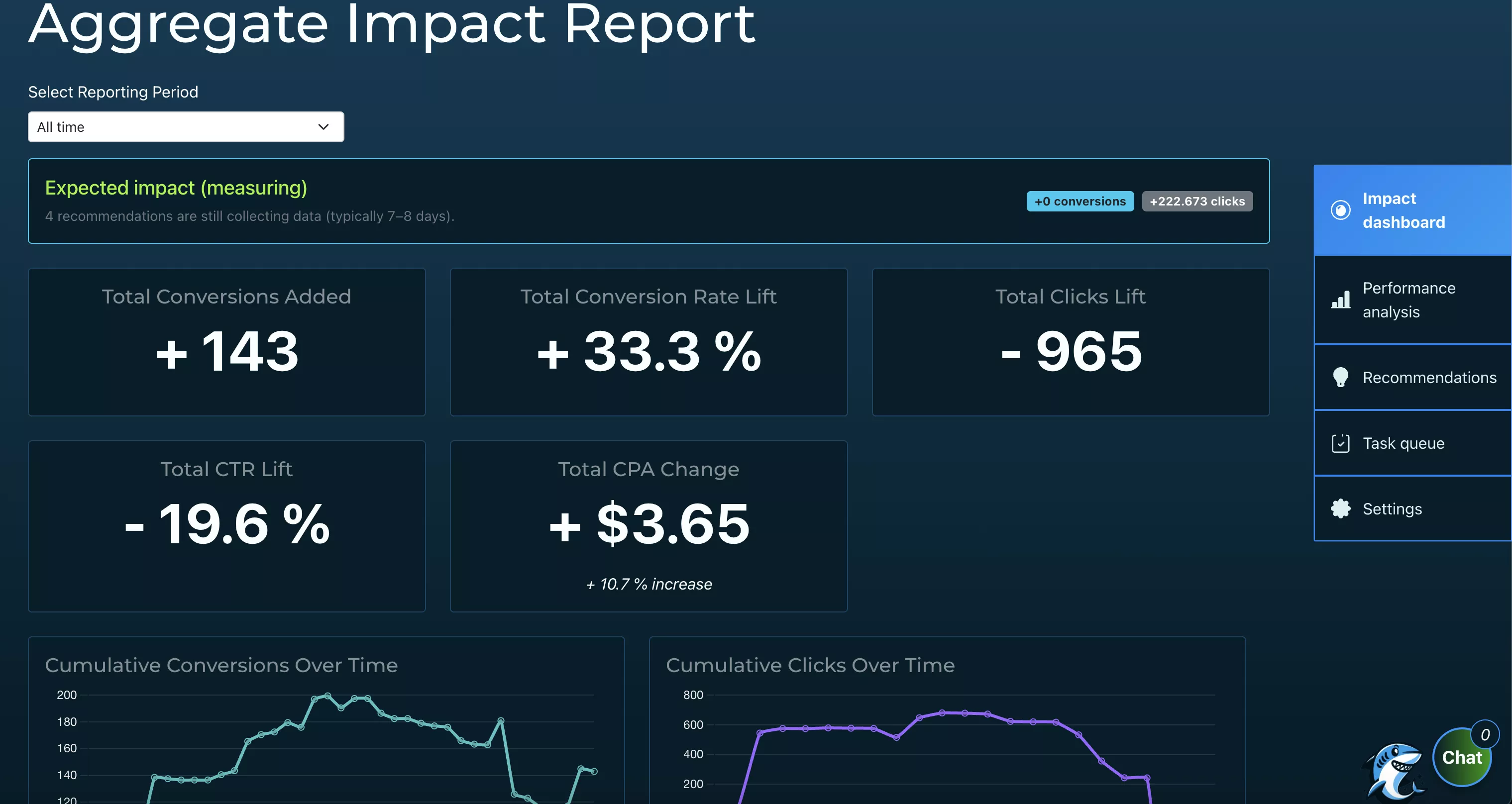Skai is a mature omnichannel ad & marketing platform geared toward enterprise and cross-channel optimization. Comparing Hai Impact against Skai helps marketers understand where Hai’s specialization (e.g. incrementality, clarity, Google focus) may outperform a broad, large-scale ad tech platform, and vice versa.
This comparison covers feature parity, tradeoffs, use cases, and decision guidance.


Skai supports a wide variety of channels including paid search, paid social, retail media, display, app marketing, and connected TV, consolidating across many publishers.
Yes — Skai’s tools include incrementality testing and forecasting features via its “Impact Navigator” and predictive AI modules.
Skai is built for scale, multi-channel orchestration, and integration across large media stacks. Hai Impact needs strong APIs and enterprise feature sets to compete at that level.
Hai Impact’s more focused approach and simpler workflows may lead to faster adoption. Skai’s broad capabilities require more configuration and learning.
Hai Impact uses tiered pricing with quotas (Interaction Credits, Automation Cycles). Skai offers annual program-level pricing that’s more fixed and predictable compared to spend-based models.
If your primary need is clarity, incremental measurement, and strong performance in Google Ads, Hai Impact likely provides a better fit.
If your business runs multi-channel campaigns, requires aggregation across publishers, and needs enterprise-scale orchestration, Skai is a formidable platform.
Try Hai Impact’s demo to see how its measurement and insight engine compares in your campaigns.
